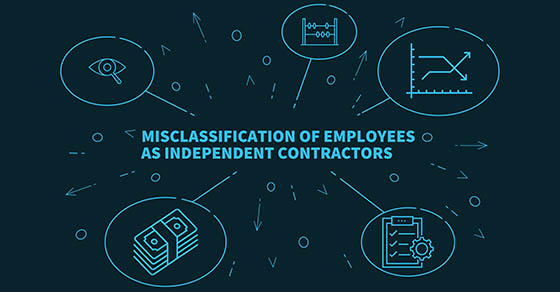4 tax challenges you may encounter if you’re retiring soon
- ByPolk & Associates
- May, 18, 2023
- All News & Information
- Comments Off on 4 tax challenges you may encounter if you’re retiring soon
Are you getting ready to retire? If so, you’ll soon experience changes that may have tax implications. For example, if you sell your principal residence to downsize and you have a gain from the sale, you may be able to exclude up to $250,000 of the gain from your income ($500,000 if filing jointly). You may want to start a new business and you’ll have several tax-related decisions to make. You also may have to pay tax on your Social Security benefits, depending on your income from other sources. Plus, there are tax rules associated with taking withdrawals from retirement plans. These are just a few of the issues you may face. We can help maximize the tax breaks you can claim.
Addressing pay equity at your business
- ByPolk & Associates
- May, 18, 2023
- All News & Information
- Comments Off on Addressing pay equity at your business
Businesses today are under increased pressure to address pay equity. This is the philosophy and practice of ensuring compensation is determined free of unjust biases historically related to demographic factors such as age, race, gender, disability, national origin and sexual orientation. There are various ways to prevent instances of inequitable pay. Use only initials or random ID numbers early in the hiring process. Refrain from asking candidates about their pay histories. Use transparent, objective criteria when recruiting, hiring, compensating and promoting employees. Train supervisors to understand pay equity and to be able to discuss it openly with staff. Contact us for help.
Use the tax code to make business losses less painful
- ByPolk & Associates
- May, 18, 2023
- All News & Information
- Comments Off on Use the tax code to make business losses less painful
Whether you’re operating a new company or an established business, losses can happen. The federal tax code may help soften the blow by allowing businesses to apply losses to offset taxable income in future years, subject to certain limitations. The net operating loss (NOL) deduction addresses the tax inequities that can exist between businesses with stable income and those with fluctuating income. It essentially lets the latter average out their income and losses over the years and pay tax accordingly. The tax rules regarding business losses are complex, especially when accounting for how NOLs can interact with other potential tax breaks. We can help you chart the best course forward.
If you’re hiring independent contractors, make sure they’re properly handled
- ByPolk & Associates
- May, 18, 2023
- All News & Information
- Comments Off on If you’re hiring independent contractors, make sure they’re properly handled
Many businesses use independent contractors to help keep their costs down, especially in these times of staff shortages and inflationary pressures. If you’re among them, make sure workers are properly classified for federal tax purposes. If the IRS reclassifies them as employees, it can be a costly error. Determining whether a worker is a contractor or an employee for income and employment tax purposes can be complex. The IRS and courts have generally ruled that individuals are employees if the businesses they work for have the right to control and direct them in the jobs. Otherwise, they’re generally contractors. Contact us if you’d like to discuss how the rules apply to your business.
Michigan Sales Tax: Change in Taxability of Delivery & Installation Charges
- ByPolk & Associates
- May, 11, 2023
- Uncategorized
- Comments Off on Michigan Sales Tax: Change in Taxability of Delivery & Installation Charges
If you are doing business in Michigan and either charging to your customers/patients/clients Michigan Sales Tax or paying Use Tax for purchases in the State of Michigan, this article explains a change that the State of Michigan Treasury views the taxability of delivery and installation charges. Effective April 26, 2023 delivery and installation charges are […]
6 tried-and-true strategies for improving collections
- ByPolk & Associates
- May, 03, 2023
- All News & Information
- Comments Off on 6 tried-and-true strategies for improving collections
Does your company have slow-paying customers? Here are six tried-and-true collections strategies: 1) Request payment up front from new customers or those with a history of payment issues. 2) Implement fees or finance charges for past due amounts. 3) Explore the feasibility of giving discounts to customers with strong or improved payment histories. 4) Communicate proactively with slow payers; as the business owner, you may need to step in at some point. 5) As a last resort, consider engaging a debt-collection attorney or collections agency. 6) Remember, if an outstanding debt is uncollectible, you may be able to claim a tax write-off as an ordinary business expense. Contact us for help.
4 ways corporate business owners can help ensure their compensation is “reasonable”
- ByPolk & Associates
- May, 03, 2023
- All News & Information
- Comments Off on 4 ways corporate business owners can help ensure their compensation is “reasonable”
If you’re the owner of an incorporated business, you know there’s a tax advantage to taking money out of a C corporation as compensation rather than as dividends. The reason: A corporation can deduct the salaries and bonuses that it pays, but not dividends. So if funds are paid as dividends, they’re taxed twice, once to the corporation and once to the recipient. Money paid as compensation is only taxed once to the employee receiving it. But there are limits to how much money you can take this way. Compensation can be deducted only to the extent that it’s “reasonable.” Unreasonable portions aren’t deductible and may be deemed dividends. Need help determining a reasonable salary? Contact us.
Tax news for investors and users of cryptocurrency
- ByPolk & Associates
- May, 03, 2023
- All News & Information
- Comments Off on Tax news for investors and users of cryptocurrency
Two developments for crypto users and investors: 1) Taxpayers must now check a box on their returns indicating whether they received digital assets as payment for property or services or whether they sold, exchanged or transferred digital assets that were held as capital assets. If “yes” is checked, taxpayers must report income related to the transactions. 2) A 2021 law extended reporting rules, similar to those required by stockbrokers, to crypto exchanges, custodians and platforms and to digital assets. The new rules were scheduled to be effective for 2023 transactions. But the IRS has postponed the effective date until it issues final regs that provide instructions.
Strengthen strategic planning with competitive intelligence
- ByPolk & Associates
- May, 03, 2023
- All News & Information
- Comments Off on Strengthen strategic planning with competitive intelligence
Every business should consider integrating “competitive intelligence” into its strategic planning. The term generally refers to the process of legally and ethically gathering and analyzing information about competitors to better anticipate market trends, analyze industry developments and compare business practices. There are many ways to go about it, including attending networking events and regularly scanning newspapers and trade publications. You can also use the internet to monitor major competitors’ websites, social media channels and financial info published on public databases. What you learn might strengthen your strategic planning or even inspire you to go in a new direction.
Businesses, be prepared to champion the advantages of an HSA
- ByPolk & Associates
- May, 03, 2023
- All News & Information
- Comments Off on Businesses, be prepared to champion the advantages of an HSA
Many companies have lowered benefits costs by offering a high-deductible health plan (HDHP) paired with a Health Savings Account (HSA). Some employees, however, might react negatively to a plan that starts with the phrase “high-deductible.” So, if you decide to offer an HSA, be prepared to communicate the advantages. An HSA is a tax-advantaged savings account funded with pretax dollars. This lowers participants’ taxable income. Also, account funds grow tax-free, and withdrawals aren’t taxable as long as they’re used for eligible expenses. HSAs have retirement and estate planning features, too. Plus, HDHPs tend to have lower premiums than other plan types. Contact us for more information.











You must be logged in to post a comment.